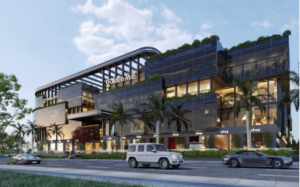
Fashion and technology have forged a symbiotic relationship that is revolutionizing the industry, driving innovation, enhancing consumer experiences, and shaping the future of global fashion trends. From wearable tech and sustainable fabrics to digital retail experiences and artificial intelligence, technological advancements are reshaping every aspect of the fashion ecosystem, from design and manufacturing to marketing and retail.
The Intersection of Wearable Technology and Fashion
Wearable technology has emerged as a frontier where fashion meets functionality, integrating advanced electronic technologies into garments and accessories to enhance performance, monitor health metrics, and provide personalized experiences. Smart textiles embedded with sensors and conductive fibers enable garments to collect data on biometric measurements such as heart rate, body temperature, and activity levels, offering insights that empower individuals to optimize their health and fitness routines.
Wearable devices such as smartwatches, fitness trackers, and augmented reality (AR) glasses have become fashion accessories in their own right, blending seamlessly into everyday attire while offering functionalities such as notifications, GPS navigation, and immersive AR experiences. Fashion brands and tech companies are collaborating to develop stylish and ergonomic wearable tech solutions that prioritize both aesthetics and functionality, catering to tech-savvy consumers seeking innovative ways to integrate technology into their lifestyles.
Innovative Materials and Sustainable Practices
Technological innovations in materials science are driving the development of sustainable fabrics and manufacturing processes that minimize environmental impact and promote ethical practices within the fashion industry. Bio-based materials derived from renewable sources, such as pineapple leaves (Piñatex), orange peels, and mushroom mycelium, offer sustainable alternatives to traditional textiles and leather, reducing dependence on fossil fuels and promoting biodiversity conservation.
Recycled materials, including recycled polyester, regenerated nylon (ECONYL), and upcycled fabrics, are gaining popularity among eco-conscious consumers and fashion brands committed to reducing textile waste and closing the loop on circular fashion. Advanced manufacturing techniques such as 3D knitting, digital printing, and laser cutting optimize material usage, reduce water consumption, and minimize chemical waste in textile production, paving the way for a more sustainable and resource-efficient fashion industry.
Digital Transformation of Retail and Consumer Engagement
The digital transformation of retail has redefined the shopping experience, empowering consumers with personalized, interactive, and omnichannel shopping experiences that bridge the gap between online and offline retail environments. Virtual fitting rooms and augmented reality (AR) try-on tools allow consumers to visualize how garments will fit and look before making a purchase, reducing return rates and enhancing customer satisfaction.
E-commerce platforms and mobile apps leverage AI-driven algorithms to offer personalized recommendations, predictive analytics, and virtual styling services based on individual preferences, browsing history, and social media interactions. Virtual fashion shows, live streaming events, and immersive digital experiences enable fashion brands to engage global audiences, build brand loyalty, and amplify their presence in the digital marketplace.
Artificial Intelligence and Data-Driven Insights
Artificial intelligence (AI) and machine learning technologies are revolutionizing fashion design, forecasting, and supply chain management analyzing vast amounts of data to predict consumer trends, optimize inventory levels, and streamline production processes. AI-powered design tools automate pattern-making, garment sizing, and customization options, enabling designers to create innovative designs with greater speed, accuracy, and cost-efficiency.
Predictive analytics and demand forecasting algorithms help fashion brands anticipate consumer preferences, minimize overstocking, and reduce markdowns, optimizing inventory management and profitability. AI-driven virtual assistants and chatbots enhance customer service providing real-time support, personalized recommendations, and seamless shopping experiences across digital platforms.
In conclusion, the integration of technology into the fashion industry represents a transformative shift towards innovation, sustainability, and enhanced consumer engagement. From wearable tech and sustainable materials to digital retail experiences and AI-driven insights, technological advancements are reshaping every facet of the fashion ecosystem, driving forward-thinking solutions that prioritize creativity, efficiency, and ethical responsibility. As fashion continues to evolve in response to technological advancements and changing consumer behaviors, the industry is poised to embrace a future defined innovation, inclusivity, and sustainability, where technology serves as a catalyst for positive change and transformative growth within the global fashion landscape.






